No matter how well you try to keep your plant happy, they will not grow well until you provide them with the required nutrients. It is important to understand the fertilizers and when and how often to apply them.
Most nurseries regularly fertilize all their plants depending on the plant’s needs. Some plants are fertilized more often, and some are rarely fertilized because they don’t need it. In most cases, nurseries try to maintain their plants in the best shape to get a good price.
If you want to know how often the nursery plants are fertilized, read this article till the end. I will also share with you some general information about fertilization.
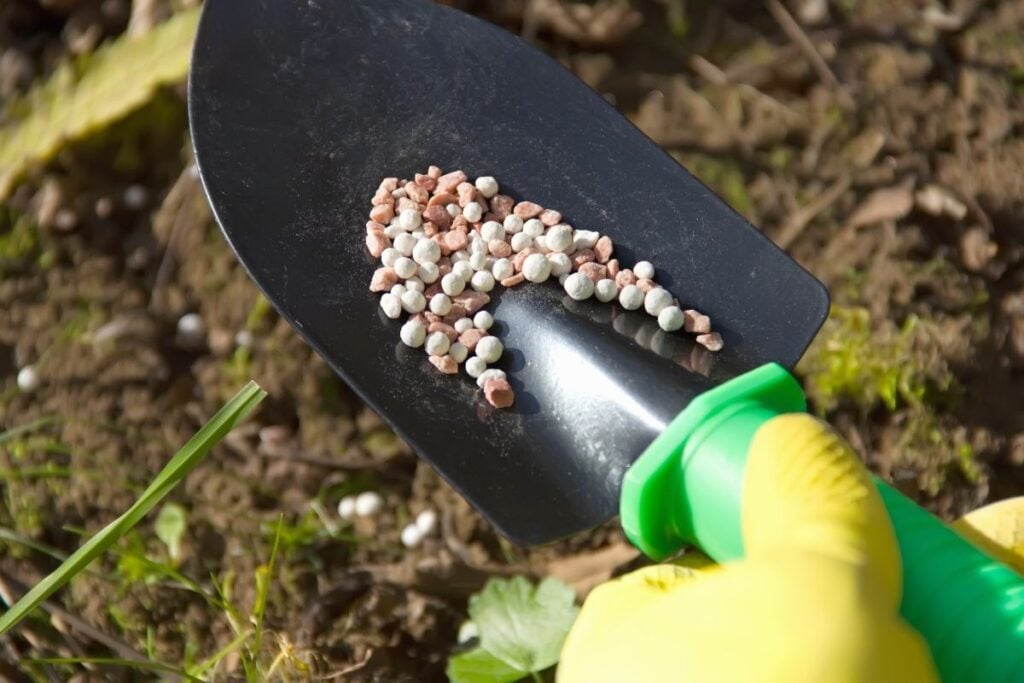
Why do plants need fertilizers?
Despite growing the plants in a nutritious potting mix, you must fertilize them separately.
All plants cannot absorb all the nutrients from the soil.
Besides, the nutrients can deplete over time due to daily watering.
That is why you should fertilize the plants should separately.
On the contrary, some plants don’t require fertilization at all.
They easily thrive in nutrient-poor soil and flourish with watering and sunlight.
However, the nurseries will still fertilize them, making them look fuller and better.
Different soil types have different nutrients.
Before fertilizing the plants, you need to know the nutrients present in the soil.
You must send your soil for testing and then apply fertilizers as needed.
The essential nutrients that plants need are:
| Nutrients | Their functions |
|---|---|
| Carbon dioxide | Increases photosynthesis |
| Hydrogen | Improves resistance |
| Oxygen | Helps cellular respiration |
| Nitrogen | Helps in chlorophyll formation |
| Phosphorus | Promotes root growth and enhances resilience |
| Potassium | Helps in transporting water and nutrients around the plant |
These are the 6 major nutrients that every plant requires in huge amounts.
Other than these, three other nutrients that plant need in small quantities are:
- Calcium
- Sulfur
- Magnesium
Besides these major nutrients, some minor nutrients from whom the plant benefits are:
- Iron
- Boron
- Copper
- Manganese
- Chlorine
- Zinc
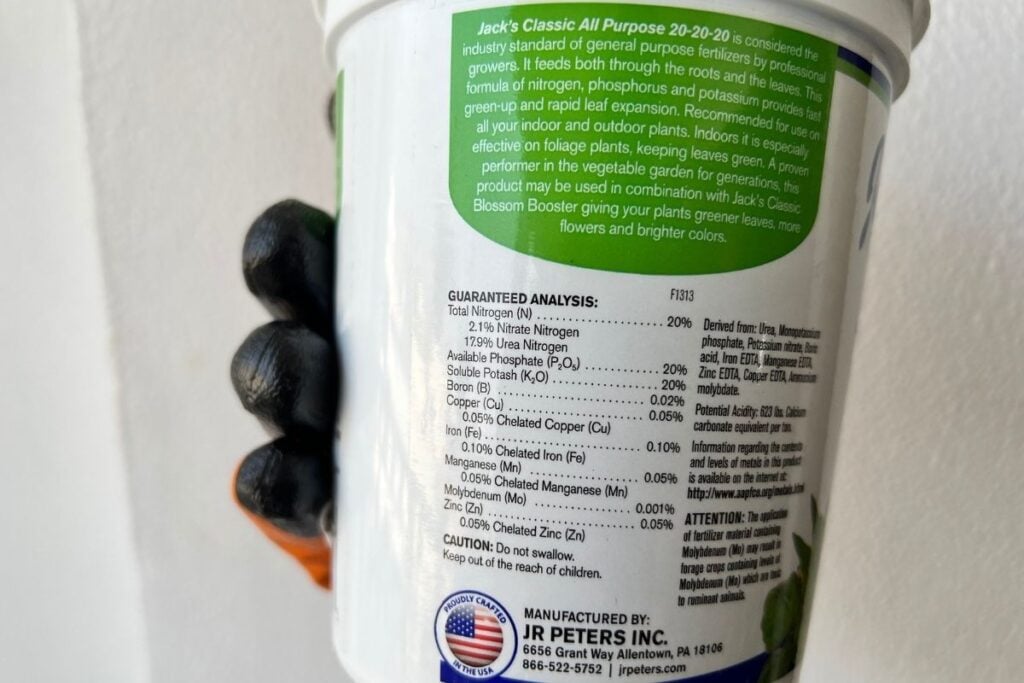
When do nurseries fertilize their plants?
In most cases, you should fertilize the plants when they grow actively in their growing months so the respective plants can grow and develop more vigorously.
Fertilization in the growing months is also followed in the nurseries.
They feed their plants regularly in the growing months.
But, they feed them more, making the plants look better and healthier.
There are certain situations where the nurseries fertilize their plants.
And this can also be followed by the home gardeners.
Remedial plant care
At some point, the soil will lose its nutrients because the nutrients get washed away with daily watering.
So, it is time to give the plants extra nutrients for optimal growth.
However, the nursery workers first check whether the plant is suffering any nutrient deficiency or not before adding fertilizer.
They also check whether the plant is suffering from any issues related to light, watering, or other things.
Because feeding a problematic plant is not good.
The nurseries immediately test the soil since they can easily access those facilities to determine which nutrients are absent and then fertilize the plant as needed.
Looking for gardening supplies? We have tested 100's of products before recommending them to you guys. Check out our best pick below:
| Image | Gardening Supplies | Best Price? |
|---|---|---|
 Top
Top Top
Top | Raised Garden Bed Kit | Check On Amazon |
 | XLUX Soil Moisture Meter, Plant Water Monitor, Soil Hygrometer Sensor for Gardening, Farming, Indoor and Outdoor Plants, No Batteries Required | No Results |
 Top
Top Top
Top | 82 Pcs Garden Tools Set and Extra Succulent Tools Set | Check On Amazon |
 | Joeys Garden Expandable Garden Hose with 8 Function Hose Nozzle, Lightweight Anti-Kink Flexible Garden Hoses, Extra Strength Fabric with Double Latex Core, (50 FT, Black) | No Results |
 Top
Top Top
Top | Dual Chamber Compost Tumbler | Check On Amazon |
 Top
Top Top
Top | Sunnyglade Plant Stakes | Check On Amazon |
 Top
Top Top
Top | Organic Cold Pressed Neem Seed Oil | Check On Amazon |
 Top
Top Top
Top | Mighty Mint Gallon :-Insect and Pest Control Peppermint Oil | Check On Amazon |
 Top
Top Top
Top | Scotts DiseaseEx Lawn Fungicide | Check On Amazon |
 Top
Top Top
Top | Jacks Classic 20-20-20 All Purpose Fertilizer | Check On Amazon |
 Top
Top Top
Top | 30,000 Seeds Pollinator Attracting Wildflower Mixture | Check On Amazon |
 Top
Top Top
Top | Survival Vegetable Seeds Garden Kit-Over 16,000 Seeds | Check On Amazon |
Regular plant fertilization
Regular fertilization is a normal daily feeding with intervals for the plant’s constant growth and health.
This fertilization is applied to the soil at proper intervals so that the plant receives enough nutrition for adequate growth.
For veggies and herb plants, nurseries fertilize them at the beginning of spring.
It is the best for these plants as they come out of winter dormancy and need a boost for vigorous spring growth.
The same is followed for the other houseplants.
They are also fertilized in their growing months to boost their growth and speed.
The nurseries use both organic and inorganic fertilizers.
However, organic is the best because they release nutrients slowly without hurting the plants.
Nursery workers are experts in using both inorganic and synthetic fertilizers because these give instant results.
Increasing the output of edible plants
Fertilizing the plants before producing fruits and flowers is great for them.
It helps them increase the size of the fruits, veggies, and flowers and their yield.
Nurseries generally use nitrogen-based fertilizers at this stage.
But besides seeing what nurseries do, you also need to check the instructions on the product label.
While repotting
The nurseries fertilize the plants once they repot the potted plants, especially the seedlings.
The potting mixes for seedlings are not that nutritious.
Fertilizing the seedling soil gives the young plants some nutrition for which they develop vigorously.
However, in some cases, it is not recommended to fertilize right after repotting.
Since they have already received fertile soil and will face a shock, feeding them after some weeks is better.
How often do nurseries fertilize their plants, and how?
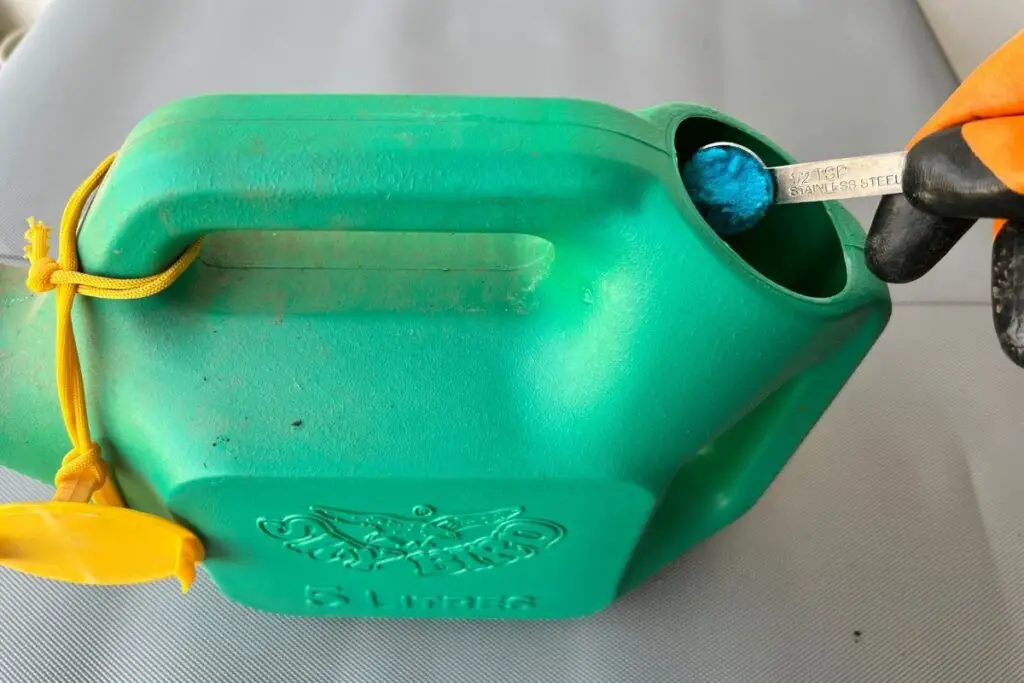
The fertilization frequency depends on the plant type and its nutrition requirements.
Synthetic fertilizers come in multiple forms – slow-release granules and liquid.
Slow-releases are dry fertilizers, like granular or pellets, and are directly applied to the soil.
For granules, spread and mix them around the soil and water the soil bed thoroughly.
Add tablets depending on the plant’s need for pellets or spikes, and water the soil to activate them for releasing nutrients.
These fertilizers are used less often, once every 3-6 months, because they release nutrients very slowly like the organic fertilizers.
Liquids are used more often, monthly or weekly, as the nutrients get used faster and instantly.
These fertilizers are mixed with water and then applied to the soil or as a foliar spray.
Another technique is foliar feeding.
Foliar feeding helps the plants absorb nutrients faster from the leaves and yields better than those applied to the soil.
Wet the plants with water-soluble fertilizers for better development during their growing or blooming seasons.
Fruit trees are fertilized once a year in spring.
In the natural grass lawn, fertilizer is applied 2-3 times a year for a lush green lawn.
For vegetables, fertilizer is applied once a month with a quick-release fertilizer.
Apply once in the growing seasons with a slow-release fertilizer.
The flowering plants are fertilized with bloom boosters for abundant blooming throughout the growing seasons.
Sometimes the nurseries also use gibberellic acid to improve flowering.
Some plants are much heavier feeders than others, fertilized regularly for optimal growth.
They are fertilized a little more than those grown in the houses because the nursery plants remain healthier than those grown in homes.
That is why they need more nutrition to grow to their full potential.
Some plants, such as Hens and Chicks or Pitcher plants, need little or no fertilizing for prolific growth.
In houses, growers sometimes don’t feed these plants as a precaution, and still, the plant doesn’t stop growing.
But these plants are also fertilized in the nurseries, boosting their growth rate.
Nursery workers are quite experienced and know when to fertilize these plants and in what amounts.
Pitcher plants and other carnivorous plants are not fertilized because they cannot take nutrients from the soil.
They maintain their nutrition level by feeding on bugs and insects.
Nurseries also add compost manure when planting some heavy feeders like garlic, along with some fertilizer.
It makes the soil more nutritious and improves moisture retention and drainage.
Compost manure and fertilizer both increase the crop yield to a great level.
What type of fertilizers do nurseries use?

Different nurseries use different kinds of fertilizer, depending on the plant type and requirement.
They don’t use rare or costly fertilizers.
They use those easily available to suggest the same to their customers.
The nurseries also apply fertilizers that give faster results and don’t require repeated applications.
Nowadays, most growers are interested in chemical fertilizers because they give a faster growth rate in less time.
But still, many nurseries rely on organic and even synthetic fertilizers.
Using organic fertilizers keeps the plants healthy for a long time.
If you are to run a nursery, your purpose should be to keep the plants healthy in the long run.
Excessive use of chemical fertilizers can degrade the plants’ health.
So, both types of fertilizers are used in the nurseries, as required.
Let us look at what types of fertilizers the nurseries use:
Organic fertilizers
These fertilizers release their nutrients very slowly over a while.
That is why the plants rarely suffer from any fertilization issues.
These fertilizers should be provided in huge quantities for an adequate supply of nutrients to the plant.
Organic fertilizers increase the soil’s humus content, keep it moist, and improve its structure and quality.
Organic fertilizers come in both dry and liquid forms.
The dry forms are usually applied by spreading over the soil bed and mixing well with the soil’s top 5-6 inches.
In the case of liquid fertilizers, nurseries use them every couple of weeks.
Below are some common organic fertilizers:
Cow manure
These are very easily available.
Well-rotted cow dung is better than fresh cow dung.
Cow dung enriches the soil’s moisture content, improves drainage and aeration, and adds a lot of nitrogen to the soil.
The plants’ growth and development increase to a great level.
Bio-compost
These are acquired from household green waste and farmyard brown waste, for example, food scraps like fruit and vegetable peels, eggshells, and other things.
Avoid plastics, animal feces, and acidic materials.
Bio-compost fertilizer retains soil moisture, reduces erosion, revitalizes soil fertility, and controls weed growth.
Vermicompost
This fertilizer comes from the breaking up of the organic waste by earthworms.
These are great fertilizers and help greatly in drainage and aeration.
Leaf mold
This fertilizer comes from the fungal and bacterial breakdown of the dry leaves.
It contains sufficient humus, which helps in good moisture.
Leaf mold is sometimes used as a growing medium for cuttings and in potting soil for orchids and ferns.
Except for these fertilizers, other organic fertilizers include fish emulsion, bone and blood meal, seaweeds, and chicken manure pellets.
Chemical fertilizers
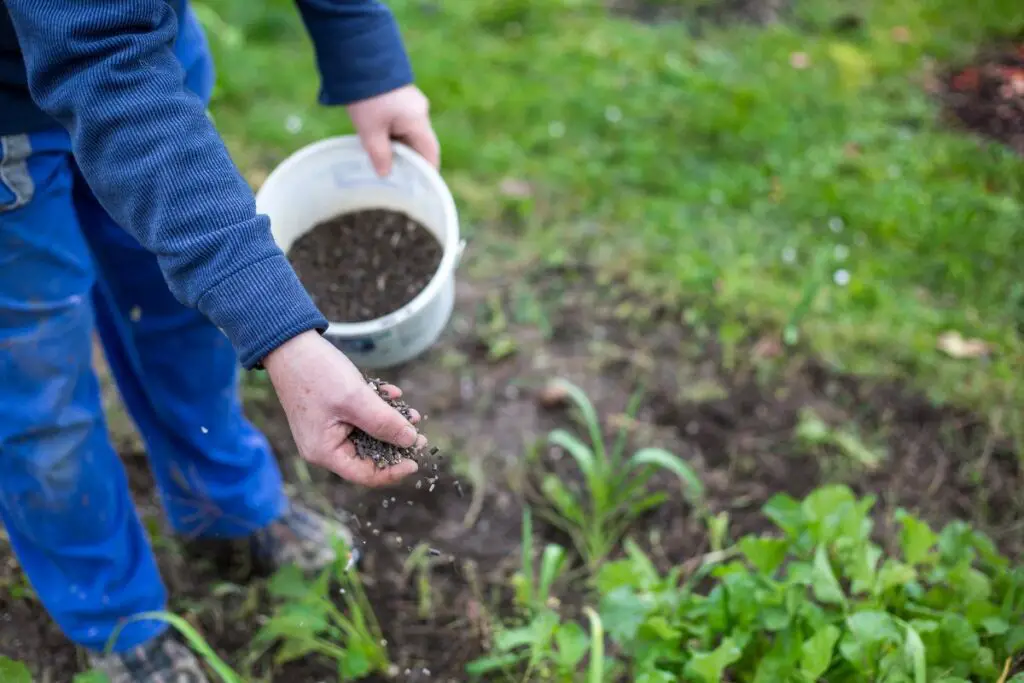
Chemical fertilizers contain some chemicals which highly boost the plants.
And that is why these fertilizers are used very carefully, as little negligence can create over-fertilization and plant death.
The nurseries first check the plant’s needs and then apply fertilizers.
Synthetic fertilizers come in granular, powder, pellets, and liquid forms.
If the plants need leaf growth, nurseries provide them with nitrate fertilizers.
These fertilizers are nitrogenous, encouraging fast plant growth and more leaves.
For root growth, phosphate fertilizers can encourage rapid root formation and growth, thus improving the plants’ overall health.
Some bloom booster fertilizers also contain high phosphorus and are used when flowering plants are not blooming well.
Phosphorus highly helps in abundant flowering.
If the plants need to grow fruits and flowers, potash fertilizers having high potassium help in it.
Potassium also helps in abundant flowering.
Nurseries also use mixed fertilizers, having multiple nutrients, especially the 3 main nutrients, nitrogen, phosphorus, and potassium.
These fertilizers also contain other minor nutrients like calcium, iron, copper, magnesium, etc., in small quantities.
For example, a fertilizer will have a ratio written on the label like NPK 5-5-5 or 10-10-10, meaning the fertilizer has 5% of each nitrogen, phosphorus, and potassium.
Common fertilizers used in most nurseries
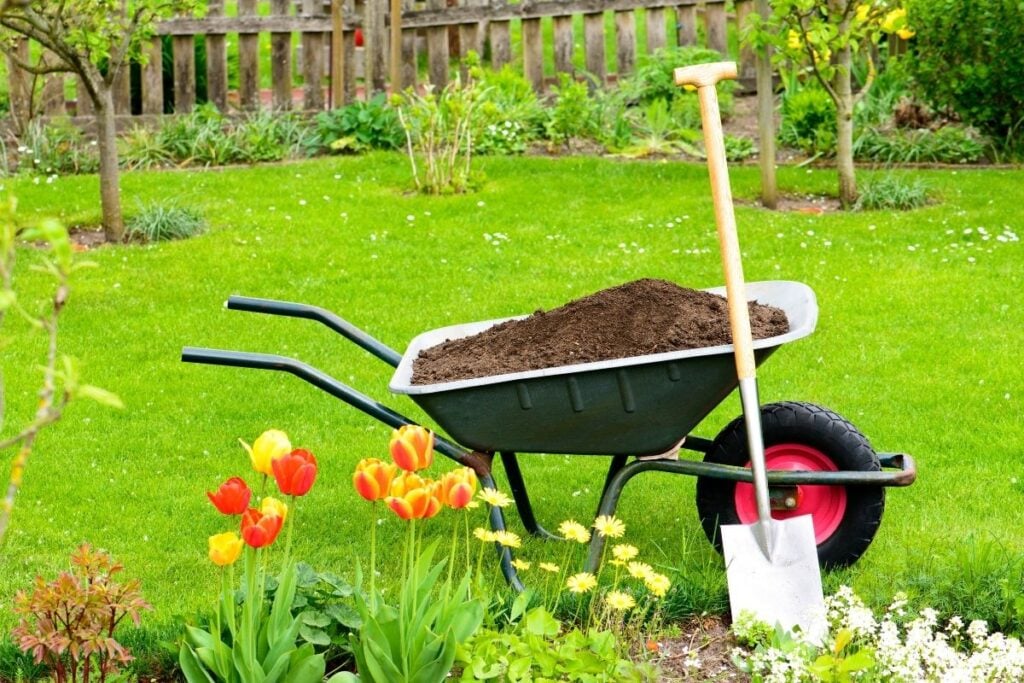
Fertilizers commonly used in nurseries are:
- 0.5-1 gm of urea mixed with water. Urea is a strong chemical fertilizer whose application results in faster and bigger growth.
- Phosphorus fertilizer, especially single super phosphate, is used in 1-2 gms per plant. You can add it directly to the soil or with water as a foliar spray.
- Potassium-based fertilizer, 2 gm per liter of water.
- DAP fertilizer in the ratio of 18:46 (nitrogen and phosphorus). It is used after the plants grow a little bigger. Nurseries use them only once a month.
- Neem Khali, 5 gm per pot/ plant around the roots.
- Mixed chemical fertilizers with a balanced NPK ratio, for example, 5-5-5, are the most common. It is used for 2 gms per liter of water and sprayed over the plants every 15 days.
- Some nurseries use mustard cake fertilizers in winter. This fertilizer needs to be dissolved in water and left for some days. Add 3-5 gms for one plant in water.
Secret nursery fertilizers
Sometimes, when we go to the nurseries to complain about growth or flowering issues, the nurseries provide us with some medicine or fertilizer.
These fertilizers or medicines are generally made from:
- 50 gms organic manure or vermicompost
- 12 gms single super phosphate or DAP
- 12 gms red potash
- 1-2 teaspoon neem Khali
This mixture is used at 10 gms per plant.
Final thoughts
The fertilization frequencies in the nurseries are no different than those in the houses. It is because when we bring a plant home, we are advised by the horticulturalists about fertilizing in detail, and that is what they have followed till now.
However, the nurseries might do a little more like using fertilizers more frequently and using both organic and inorganic alternatives for the plants’ better growth and development. We can’t do that because we are not experts like the nursery workers.
So, there is not much difference, yet there is a difference.
Reference: Texas A&M AgriLife Service, Department of Primary Industries and Regional Development’s Agriculture and Food, Nurserymag, University of Minnesota, Clemson University.
